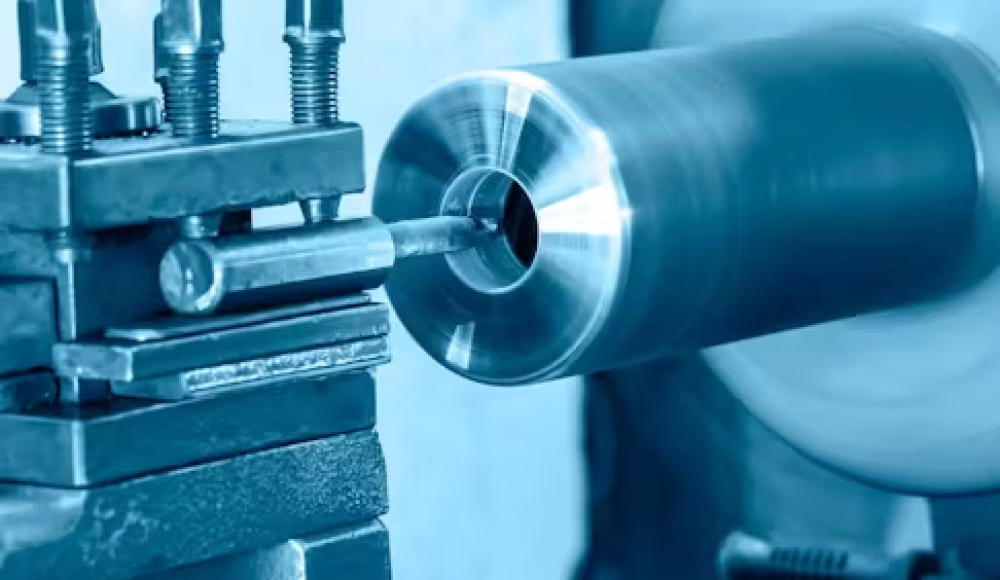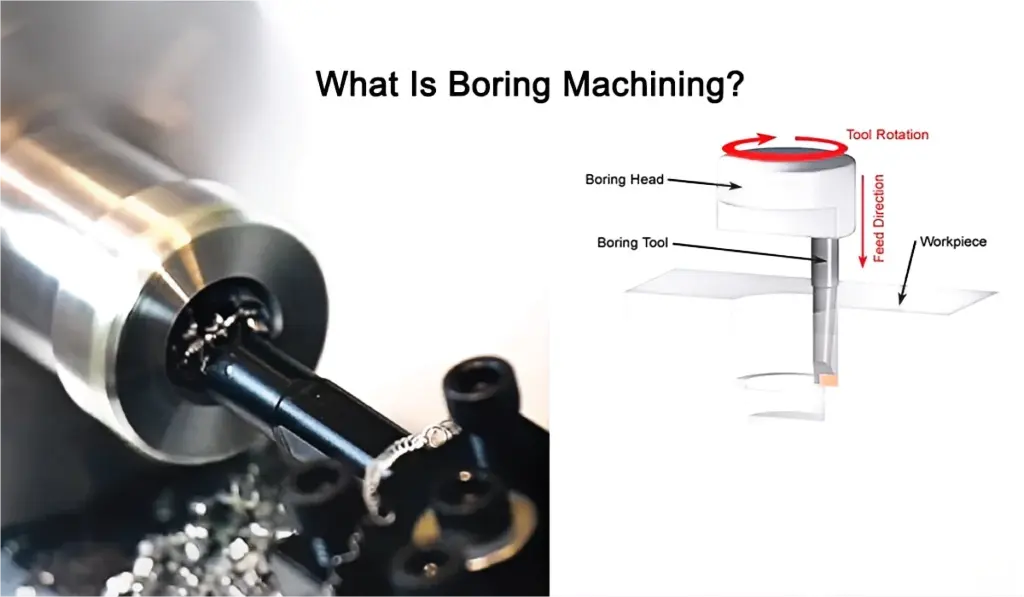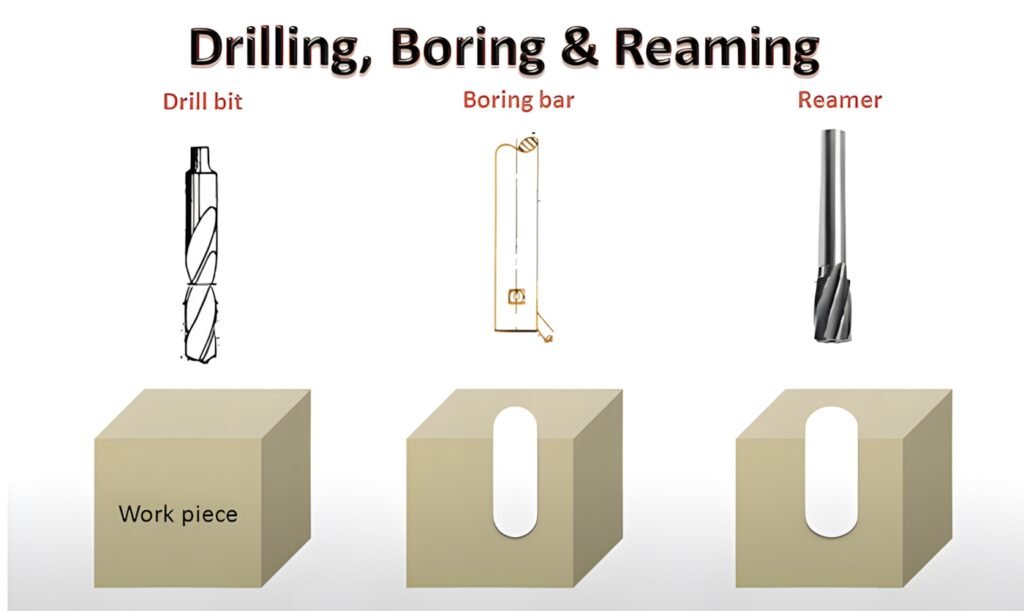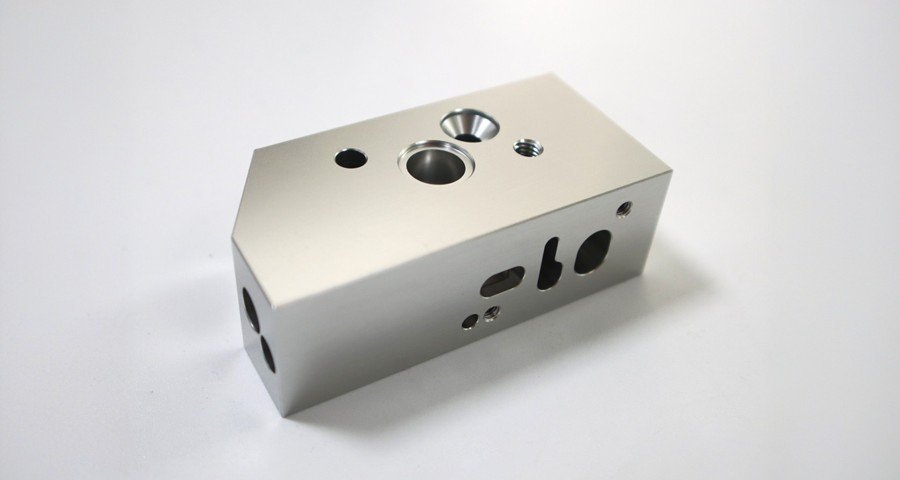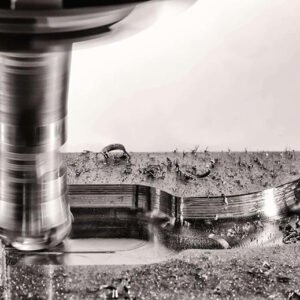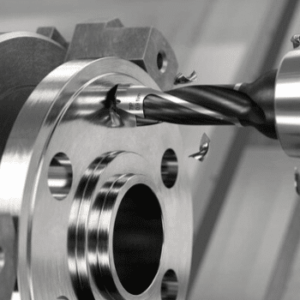Achieving precise hole sizes and exceptional surface finishes is critical—especially in industries such as aerospace, settore automobilistico, medical device production, and heavy machinery manufacturing. One of the most effective methods to meet these demands is boring machining.
Unlike drilling, which creates a new hole from scratch, boring is the process of enlarging and refining an existing hole that was originally drilled, lancio, or forged. This secondary machining process allows manufacturers to achieve micron-level accuracy, improve concentricity, and produce superior surface finishes.
This guide provides a comprehensive, engineer-focused deep dive into boring machining—its advantages, limitazioni, processi, equipment types, challenges, and expert tips for success.
What is Boring Machining?
Boring machining is a precision machining method used to enlarge, align, or finish an existing hole to meet exact specifications.
Key purposes include:
Increasing hole diameter to match design tolerances
Correcting misaligned or imperfectly drilled holes
Improving surface finish for better component performance
Ensuring concentricity with other features in the part
The operation is typically carried out using a single-point cutting tool called a boring bar, mounted on equipment such as a lathe, Macchinatura CNC, O specialized boring machine.
Advantages of Boring Machining
Exceptional Accuracy
Boring can achieve tolerances as tight as ±0.0005 inches (±0.0127 mm)—up to 40 times more precise than standard drilling.
Finitura superficiale superiore
With the right tooling and cutting parameters, boring can produce finishes of 32 micro inches Ra or better, improving sealing surfaces and wear resistance.
Versatilità
Works on a wide range of materials—acciaio, alluminio, titanio, ottone, plastica, compositi—and can create features beyond circular holes, ad esempio slot, scanalature, and keyways.
Custom Hole Sizes
Not restricted to standard drill diameters—ideal for parts requiring non-standard or oversize holes.
Efficiency in Mass Production
CNC-controlled boring machines can process multiple parts with consistent repeatability, reducing scrap rates and increasing throughput.
Limitations of Boring Machining
Nonostante i suoi benefici, boring machining has several drawbacks:
High Equipment Cost – Precision boring machines and CNC centers require significant capital investment.
Skilled Operator Requirement – Precision setup and tool alignment are critical for accuracy.
Only Works on Existing Holes – Requires a pre-drilled or cast hole before boring begins.
Setup Time for Small Runs – May not be cost-effective for one-off jobs.
Tool Deflection Risk – Especially in deep hole boring, leading to diameter variations.
How Boring Machining Works
Make a pilot hole
Drill or cast a hole slightly undersize (so there’s material left to clean up).
Deburr/chamfer the entrance so the boring bar enters cleanly.
Set up and align
Tornio: Indicate the part so the existing hole runs true; mount the boring bar as short and rigid as possible.
Mulino: Locate the hole center with a probe/edge finder; fit a boring head or boring toolholder in the spindle.
Rough bore
Take a few larger radial steps (bigger depth of cut) to remove most of the stock quickly.
Partire 0.10–0.30 mm (0.004–0.012″) per side for finishing (varies by material/size).
Semi-finish (optional but smart)
Reduce depth of cut and feed to stabilize size and improve roundness.
Re-measure; compensate for any thermal drift or tool deflection.
Finish bore
Prendere one or two light passes (per esempio., 0.02–0.08 mm / 0.001–0.003″ per side).
Use consistent coolant/air and steady feed to hit size and surface finish.
Add a spring pass (same size, no offset) if the part/material “springs back.”
Measure and verify
Usa un bore gauge, air gauge, O telescoping gauge + mic for size and roundness.
Controllo concentricity E posizione to the datum (CMM if critical).
Deburr the entrance/exit; add a small chamfer if specified.
Types of Boring Machines
Horizontal Boring Machine
Cos'è: The spindle (the part holding the cutting tool) is mounted horizontally.
When to use it: Perfetto per long parts or when you need to bore holes deep into the side of a large workpiece.
Typical jobs: Blocchi motore, machine bases, large plates.
Why it’s great:
Maniglie big, heavy workpieces with ease.
Excellent for precision on large-scale industrial components.
Vertical Boring Machine
Cos'è: The spindle is mounted vertically, and the workpiece usually sits flat on a rotating table.
When to use it: Ideale per grande, pesante, and awkwardly shaped parts that are easier to handle lying flat.
Typical jobs: Turbine casings, big flanges, large valves.
Why it’s great:
Gravity helps keep the part stable.
Easier to load and unload heavy parts.
Floor Boring Machine
Cos'è: A massive machine with a moving column and spindle, designed for very large components placed directly on the shop floor or a heavy-duty table.
When to use it: Per huge industrial parts that don’t fit on standard machine tables.
Typical jobs: Shipbuilding parts, wind turbine hubs, large gear housings.
Why it’s great:
Can machine parts so big they have to stay in one place.
Handles heavy-duty, high-precision work.
Jig Boring Machine
Cos'è: A super-precise machine designed to produce exact hole locations e finisce, often used to make jigs, infissi, and precision tooling.
When to use it: Quando tolerances are extremely tight and accuracy is the top priority.
Typical jobs: Componenti aerospaziali, high-end molds, die sets.
Why it’s great:
Incredibly accurate positioning.
Perfect for work that can’t afford even a tiny alignment error.
CNC Boring Machine
Cos'è: A computer-controlled boring machine that automates movement, velocità, and tool adjustments.
When to use it: Per produzione ad alto volume or parts with complex boring requirements.
Typical jobs: Componenti di motori automobilistici, cilindri idraulici, industrial machinery parts.
Why it’s great:
Highly repeatable results.
Can handle complicated programs and multi-step boring in one setup.
Line Boring Machine
Cos'è: A portable or stationary machine that bores a straight, perfectly aligned hole through multiple surfaces in a single setup.
When to use it: To repair or machine bores in place without moving the part to a big machine.
Typical jobs: Repairing large equipment like excavators, boring through bearing housings, gearbox bores.
Why it’s great:
Saves time and money on heavy equipment repairs.
Ensures perfect alignment between multiple bores.
Types of Boring Processes
Line Boring
Aligns bores in components like blocchi motore, turbine. Tool supported at both ends for rigidity.
Back Boring
Enlarges a hole from the opposite side—used in firearm manufacturing and hydraulic components.
Blind Boring
Creates a hole that does not pass completely through the workpiece—common in hydraulic manifolds.
Micro Boring
Usato per minuscolo, precise holes in medical devices and aerospace parts, often requiring tolerances within micron.
Verticale & Horizontal Boring
Choice depends on workpiece size, forma, and weight.
Common Challenges in Boring Machining
Vibrazione – Caused by long boring bars; leads to chatter marks.
Tool Deflection – Affects diameter accuracy.
Maintaining Concentricity – Especially in deep holes.
Machine Wear – Can cause accuracy loss over time.
Surface Finish Control – Requires precise cutting parameters.
Generazione di calore – Must be managed with coolants to prevent dimensional distortion.
Expert Tips for Better Boring Machining
Use the Right Tool Material & Geometria – Carbide inserts for harder metals; high-speed steel for softer materials.
Ottimizza i parametri di taglio – Adjust velocità, foraggio, e profondità di taglio for material type.
Keep Boring Bars Short & Rigid – Reduces vibration and deflection.
Perform Regular Machine Maintenance – Prevents performance drop.
Use High-Quality Coolants – Improves finish and extends tool life.
Boring vs Other Machining Processes
| Processi | Precisione | Finitura superficiale | Scopo | Tolleranza tipica |
| Noioso | Molto alto | 32 μin Ra | Enlarge/refine existing holes | ±0,0005 pollici |
| Perforazione | Medio | 125 μin Ra | Create new holes | ±0.02 in |
| Alesatura | Alto | 63 μin Ra | Slightly refine holes | ± 0,001 in |
| Fresatura | Variabile | 125 μin Ra | Create holes/features | ±0.01 in |
Applications of Boring Machining
Industria automobilistica 🚗
Dove viene usato: Blocchi motore, cylinder bores, crankshaft housings, and gearbox cases.
Why boring matters here: Engines need holes that are perfectly round and aligned to keep everything running smoothly and reduce wear. Even a tiny misalignment can cause vibration or damage over time.
Industria aerospaziale ✈️
Dove viene usato: Jet engine housings, componenti del carrello di atterraggio, and structural frames.
Why boring matters here: Nell'aerospaziale, weight and precision are critical. Boring helps achieve tolleranze strette and smooth finishes that ensure safe, reliable performance at extreme speeds and temperatures.
Heavy Machinery and Construction Equipment 🚜
Dove viene usato: Excavator arms, loader joints, alloggiamenti cuscinetti, and gearboxes.
Why boring matters here: These parts take a lot of stress, so the bores must be forte, aligned, and able to handle heavy loads without failure.
Olio, Gas, and Energy Sector ⚙️
Dove viene usato: Turbine housings, pump casings, and drill components.
Why boring matters here: The bores in these parts often carry high-pressure fluids or gases, so they need to be accurately machined to prevent leaks and withstand extreme conditions.
Industria marina 🚢
Dove viene usato: Ship propeller shafts, supporti del motore, and large gearbox housings.
Why boring matters here: Marine parts are exposed to harsh saltwater environments, so boring helps ensure proper fit and alignment, reducing wear and corrosion over time.
Attrezzature mediche 🏥
Dove viene usato: Strumenti chirurgici, impianti ortopedici, and diagnostic devices.
Why boring matters here: In the medical world, La precisione è tutto. Holes must be liscio, burr-free, e perfettamente modellato to avoid complications or damage during use.
Costruzione di stampi e matrici 🛠️
Dove viene usato: Injection mold bases, die sets, e maschere.
Why boring matters here: Perfectly bored holes ensure that molds align correctly, producing consistent, high-quality parts every time.
Conclusione
Boring machining remains one of the most reliable and precise methods for achieving perfect hole geometry in manufacturing. While it requires specialized equipment, operatori qualificati, and careful setup, the results—high accuracy, Eccellente finitura superficiale, and repeatability—make it indispensable in many industries.
Per saperne di più:
Fresatura CNC: A Complete Guide to Precision Machining
Tornitura CNC: Principles and Applications

